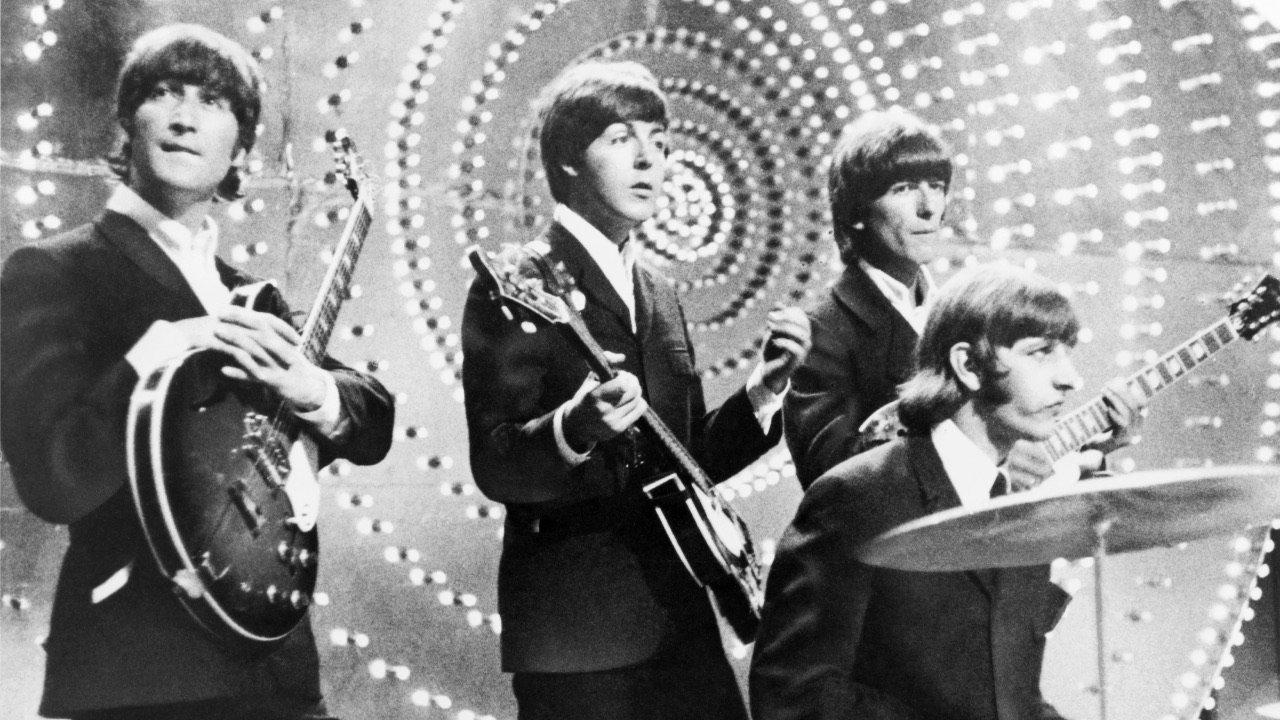‘Screaming, chanting, struggling teenagers’: the enduring legacy of the Beatles tour of Australia, 60 years on

The Beatles began their first and only tour of Australia 60 years ago this week. It remains a landmark event in our social and cultural history.
The Beatles spent almost three weeks in Australia and New Zealand. Touching down in a wet and cold Sydney on Thursday June 11 1964, they played 32 concerts in eight cities: first Adelaide (where drummer Ringo Starr, suffering from tonsillitis and pharyngitis, was replaced by Jimmie Nicol), then Melbourne (with Starr again), Sydney, Wellington, Auckland, Dunedin, Christchurch and two final shows in Brisbane on June 29 and 30.
Charming and irreverent as they were, The Beatles themselves were only part of the reason the tour was so memorable.
It was the hordes of screaming fans who followed their every move that astonished onlookers.
The rise of Beatlemania
By 1964, Australian teenagers had access to a global youth culture. As the feminist author Anne Summers, then an Adelaide teenager, recalled in her memoir Ducks on the Pond: "It was rare for world-famous pop stars to come to Adelaide and unheard of for a group at the height of their celebrity."
That Australian teenagers had the opportunity to see The Beatles in person in 1964 was due to a stroke of luck for tour promoter Kenn Brodziak. In late 1963, Brodziak secured the then up-and-coming Beatles for a three-week tour of Australia at a bargain rate.
By the time the tour took place, the Beatles were the biggest band in the world.
Their popularity had skyrocketed throughout 1964. I Want To Hold Your Hand went to number one on the Australian charts in mid-January and the top six singles that year were all by The Beatles.
So when the band arrived here, Beatlemania was the predictable result: crowds of surging, screaming young people, who turned out in massive numbers wherever the Beatles appeared.
While the earliest rock ‘n’ roll fans (and even performers) in the late 1950s were often labelled juvenile delinquents, there were too many teenagers swept up in Beatlemania for them to be dismissed in the same way. The crowds became a spectacle in themselves.
‘A chanting mass of humanity’
Beatlemaniacs were loud and unruly. The Daily Telegraph reported: "50,000 screaming, chanting, struggling teenagers crowded outside Melbourne’s Southern Cross Hotel this afternoon to give the Beatles the wildest reception of their careers."
It was a similar story in Adelaide. The Advertiser described: "police, their arms locked together and forming a tight circle around the car carrying the Beatles, had to force a path through the surging, screaming crowd […] Police said they had never seen anything like it."
The crowds overwhelmed observers with their sheer size – a “solid, swaying, chanting mass of humanity”, according to The Age – and noise. The Daily Telegraph consulted an acoustics expert to conclude “Beatles fans scream like [a] jet in flight”.
Beatlemania was visible (and noisy) evidence of a growing teenage consumer market and the assimilation of rock music, dancing and youth culture into the leisure practices of middle-class youth. It was proof (if anyone still needed it) the youth market was highly developed and extremely lucrative.
The speed with which companies found a ready audience for Beatles merchandise (wigs, souvenirs, magazines) demonstrated the relative affluence of the youthful consumer in mid-1960s Australia. This market would continue to grow throughout the decade.
A new idea of youth
Perhaps the most remarkable characteristic of Beatlemania was its femaleness. While not all Beatles fans were girls, it was the crying, screaming girls who attracted the most media comment.
The Daily Telegraph described them this way: "It was the girls, the nymphets of 1964 in their uniform of black slacks and duffle coats and purple sweaters – who showed the orgiastic devotion due to the young men from the damp and foggy dead end of England […] the girls wept, screamed, grimaced, fainted, fell over, threw things, stamped, jumped and shouted […] [The Beatles] were the high priests of pop culture, taking due homage from a captive, hypnotised hysterical congregation."
The references to “nymphets” with their “orgiastic devotion” tells us many Australians thought these young women were transgressing the norms expected for their era. Young women in the early 1960s were still expected to be demure and responsible. Beatles fans were breaking these rules, and helping to rewrite the meanings of youth and gender in 1960s Australia.
Beatlemania was an expression of female desire. The Beatles were powerful objects of fantasy for many fans in a world where sexual mores were slowly changing but where women were still expected to police male desire, stopping young men from “going too far”. A fantasy relationship with a Beatle became a way for young women to dream about their ideal relationship.
Screaming, chasing a Beatle down the street: these were acts of rebellion and joy that prefigured the rise of women’s liberation, with its embrace of rebellious femininity.
Beatlemania reminds us that, even if women were not always behind the microphone or playing the guitar, they have been important to the history of rock ‘n’ roll music as fans and audience members.
Beatlemania marked the ascendancy of a new idea of youth: these young people weren’t mere replicas of their parents, but they were not juvenile delinquents, either. The Beatles tour drew young Australians more closely into a transnational youth culture, fostering the development of a distinctively Australian variant here.
Beatlemania also demonstrated the massed power of youth. By the end of the 1960s, many Australian teenagers were gathering on the streets to protest, rather than celebrate, and to make political demands, rather than to scream.
Michelle Arrow, Professor of History, Macquarie University
Image credits: Granger/Shutterstock Editorial
This article is republished from The Conversation under a Creative Commons license. Read the original article.
